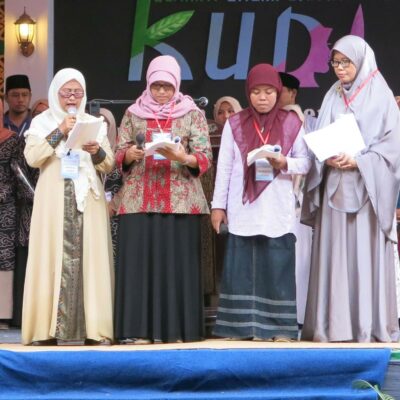Bangladesh is a South Asian Muslim majority state. Despite being a small country geographically, Bangladesh has a larger Muslim population than Saudi Arabia, Iran and Afghanistan combined. The total population of Bangladesh is over 160 million. More than 89 percent are Sunni Muslims and Hindus constitute 10 percent. A small number of Shia Muslims, Baha’is Baha’is, and Ahmadi Muslims are part of the Bangladeshi Muslim population. Bangladesh is also home of 54 indigenous groups.
Bangladesh came to the attention of counter-terrorism and counter-violent extremisms experts, analysts and scholars during the United States’ controversial so-called War on Terror following the attacks on the US on September 11, 2001. A series of religiously inspired terror-related events made headlines in Bangladesh and around the world: a series of bomb attacks in 2005; a deadly campaign from 2013 against the secular and atheist bloggers, writers and publishers, LGBTQ activists, and Sufis; and a 2016 Islamist terror attack in an upscale Dhaka restaurant where 22, mostly foreigners, were murdered. A plethora of research and analysis has focused on deciphering the objectives, tactics, and operational patterns of the militant Islamist groups. In this context, expressions of Islamist identity and politics were often misunderstood as radicalised violent extremism, to the extent that there were even suggestions that Bangladesh was turning to the next Afghanistan. Such a misleading approach was politically beneficial for some Bangladeshi politicians who moved to suppress opposition and critics in the name of suppressing terrorism and radicalisation leading to violence.
Following a 2016 terrorist attack on a cafe in the capital Dhaka, a more nuanced approach to understanding the diversity within Bangladeshi Islam began to emerge. In the aftermath of the Daesh-inspired attack there was intense public debate in the country about the nature of Islam. Does terrorism represent part of Islam? Does Islam condone violence? Hundreds and thousands of Bangladeshi Muslim students and teachers from traditional Islamic seminaries locally known as Madrassahs condemned the 2016 attack, saying that Islam does not support terrorism. However, the accomplices of those who carried out the attack released a video following the attack claiming that it was an effort to establish a form of violent Islam in Bangladesh. Such debate among Bangladeshi youth about whether Islam represents violence or not is symptomatic of a wider discussion about what Islam is and what it is not. This debate shows that there are wildly different interpretations of Islam.
This article sheds lights on this debate based on author’s decade of research expertise on Islam, identity and politics in Bangladesh and relies on primary and secondary data gathered on past research studies.
Diverse socio-cultural expressions of Islam in Bangladesh
The history of Bengali Muslims shows that from the beginning of Islam’s arrival in the Indian subcontinent, Muslims were divided in terms of their socio-cultural and political approaches to Islam. Studies on Islam and its socio-political expressions in Bangladesh before the ‘War on Terror’ have focused on the diverse roots of Islam in Bangladesh. It is difficult to determine precisely when Islam was introduced to what is now known as Bangladesh in ancient India, a region inhabited by Buddhists and Hindus before the arrival of Islam. According to Bangladeshi historian, Khan Raisuddin, Arab traders and merchants began to arrive in Chittagong, a port city of Bangladesh, in the eighth century after the death of Muhanmmad. They came for the spice trade, and many traders and merchants settled in what is now Bangladesh and broader areas of medieval India. Through these migrant Arab traders and merchants, the people of that region came to know about Islam. This group of Muslims used to be known as Ashrafs or high-born Muslims. Those who were converted to Islam from lower Hindu casts were known as Atraps.
Many Bengali Muslims who searched for an ‘authentic’ version of Islam tend to criticise animistic and Hindu-influenced cultural practices by Atrap Muslims. During the colonial period, at least two political movements known as Faraizi and Tariqah-i-Muhammad (meaning in the path of [Prophet] Muhammad) believed that a significant reason that Bengali Muslims were the colonial subjects of the British was that they had deviated from a ‘pure’ form of Islam. Islam’s ‘pure’ form is rooted in Arab-oriented cultural expression. This tension between ‘pure’ and ‘impure’ forms of Islam still plays out among Bangladeshi youths, and has been amplified by drivers of globalisation, including the internet and migration; as well as the ‘War on Terror’ and resistance from Muslim hardliners. Bangladeshi youths have found themselves at the receiving end of multiple narratives about Islam. An understanding of the relationship between Islam, identity culture, and politics in Bangladesh is required to understand Islam in Bangladesh. It is ubiquitous in society and its expression remains diverse. Two examples are pertinent to discuss here.
First, the discussion and debate about the rally of Pohela Boishakh, which is a celebration of the first day of the Bengali New Year, is noteworthy. Historically hosted by the Fine Arts Department of Dhaka University, the procession of Pohela Boishakh features supersized replicas of Bengali birds, owls, and other animals. My research found that many young Bangladeshis who go to the mainstream educational institutes criticise the rally as un-Islamic. Further, students of Madrassahs I interviewed believed the procession is part of a plan of Hindus, Christians and Zionists to destroy Muslim culture in Bangladesh. As mentioned earlier, this debate goes back to the colonial period when there was a belief that Islam needed to be ridded of ‘animistic’ belief and cultures. However, many of those who participate in the procession are believers in Islam and see no problem participating in it and being Muslims. To them, critics of the rally are fanatic radicals.
Second, my research found the clothing and music preferences of individuals signal a significant distinction between who is widely considered a more ‘authentic’ Muslim. During a focus group discussion in Bangladesh, I observed disagreement among two Hijab wearing women about the ‘correct way’ of wearing Hijab. In the view of a research participant who wore a Hijab with a jilbab, ‘those who wear a Hijab with jeans and t-shirts are not authentic and pure Muslims’. Another participant strongly believed rock ’n roll music is un-Islamic (although he played the drums in a rock band called ‘Infidels’. He hoped that one day Allah will forgive him for what he regarded as these sins). But there were others who believe playing rock ‘n roll is not against Islam. Such differentiated meaning-making remains a vital source of information in relation to different perceptions of Islam circulating in a Muslim society.
However, it should be mentioned that these examples reflect perceptions of a particular type/category of people—Muslims who call themselves secular often cite how Islam accepts diversity.
Diverse political expressions of Islam in Bangladesh
Such socio-cultural diversity in interpreting Islam necessitates multiple forms of politics using Islamic expressions. In my book I have documented and articulated how the two biggest mainstream parties Awami League (AL, which has been in power since 2009 and Bangladesh Nationalist Party (BNP) both project themselves as ‘pro-Islamic’. My book has further documented how the leaders of both parties have publicly projected their Islamic identity, developed social policy based on ‘Islamic’ culture through a state-funded Islamic missionary organisation called Islamic Foundation, and developed alliances with traditional and modern Islamist parties.
A dominant narrative is that the AL is the secular party in Bangladesh because the party endorsed secularism in the constitution after the country’s independence and reinstated its ‘commitment to secularism’ by re-endorsing again in 2010. However, the AL also kept Islam as the state religion, so to regard it as secular is an oversimplification. In my book and elsewhere, I have explained how religiously conservative policies were framed between 1972-1975 and how current Prime Minister Sheikh Hasina defined secularism as an Islamic concept fostering religious freedom for all under Islamic cultural primacy. Public expressions of atheism and homosexuality are outlawed. Following a series of attacks on Bangladeshi atheists and secular writers, bloggers, publishers, and Sufi Muslims, a law named the Digital Security Act 2018 was framed, making offending religious sentiment a criminal offence. Any person offending Islamic sentiment on Facebook or any other digital media may be jailed for 7-14 years. Before the 2018 election, 61 out of 70 active Islamist parties were associated with the AL or its electoral alliance. In addition, the public adherence to Islam of AL’s archrival BNP’s is well documented.
The significant support of Islam by the major political parties has tolerated and facilitated the proliferation of traditional Islamist politics through groups such as Hefazat e Islam (HI). HI is a madrassah-based pressure group mostly inspired by Deobandi tradition. However, there is some evidence from journalists and law enforcement officials that this network was manipulated and used by hardliner Islamists, including those who fought for the Taliban during the Cold War period and a new generation of tech-savvy Islamists who are more indoctrinated towards Wahabi and Salafi culture. In 2013, HI demanded the Bangladesh government introduce a ban on the public mixing of men and women, and the death penalty for atheist writers, among others. HI said it had no political ambition apart from ‘protecting Islamic values and culture’. The HI did not publicly criticise democratic politics though it spearheaded an anti-democratic social agenda.
In contrast, the modernist Islamist party Jamaat e Islami believes modern politics is a necessary medium to keep Bangladesh Islamic. In an apparent expression of moving away from the vision of its founder Maududi who believed democracy is an evil force of the ‘non-Muslim West,’ activists of Bangladesh Jamaat e Islami (BJI) support electoral politics.
The supporters of the transnational banned Islamist outfit in Bangladesh, Hizbut Tahrir (HT), once highly active in Bangladeshi university campuses in the early years of the ‘War on Terror’, differ from Jamaat and believe democracy is an evil and a conspiracy of the West to colonise Muslim land. Though HT is not known to espouse violence despite its radical and authoritarian ideas, the global terror groups Daesh and AQ have found a Bangladeshi support base and Bangladesh has experienced a series of terror attacks in the name of establishing Islam, although all the major parties have vehemently condemned those attacks in the name of Islam.
Conclusion
Islam in Bangladesh reminds us of the core argument of the influential and well known book What is Islam? which argues that ‘Islam’ should be understood as a historical and human phenomenon with plenitude and complexity of meaning. Bangladesh demonstrates that there is scope for more nuanced and in-depth studies to understand the cultural and political diversity of the Muslim population. It is a Muslim country with over 89 percent Sunnis, yet it thrives on heterogeneity. Within this context, political secularism has Islamic influences but many Muslims remain divided as to what constitutes ‘pure Islam’ and preferences for music, dress, and symbols are a source of contention about what Islam is and isn’t.
Mubashar Hasan PhD is an Adjunct Fellow at the Humanitarian and Development Research Initiative (HADRI) at the Western Sydney University, Australia. He is the author of Islam and Politics in Bangladesh: The followers of Ummah. He co-edited Masks of Authoritarianism: Hegemony, Power and Public Lives in Bangladesh and Radicalization in South Asia. He is the winner of Griffith Business School Outstanding International Alumnus Award 2021.
Image: Eid-ul-Adha prayer atBaitul Mukarram National Mosque, Bangladesh. Credit: Nahid Sultan/WikiCommons.




